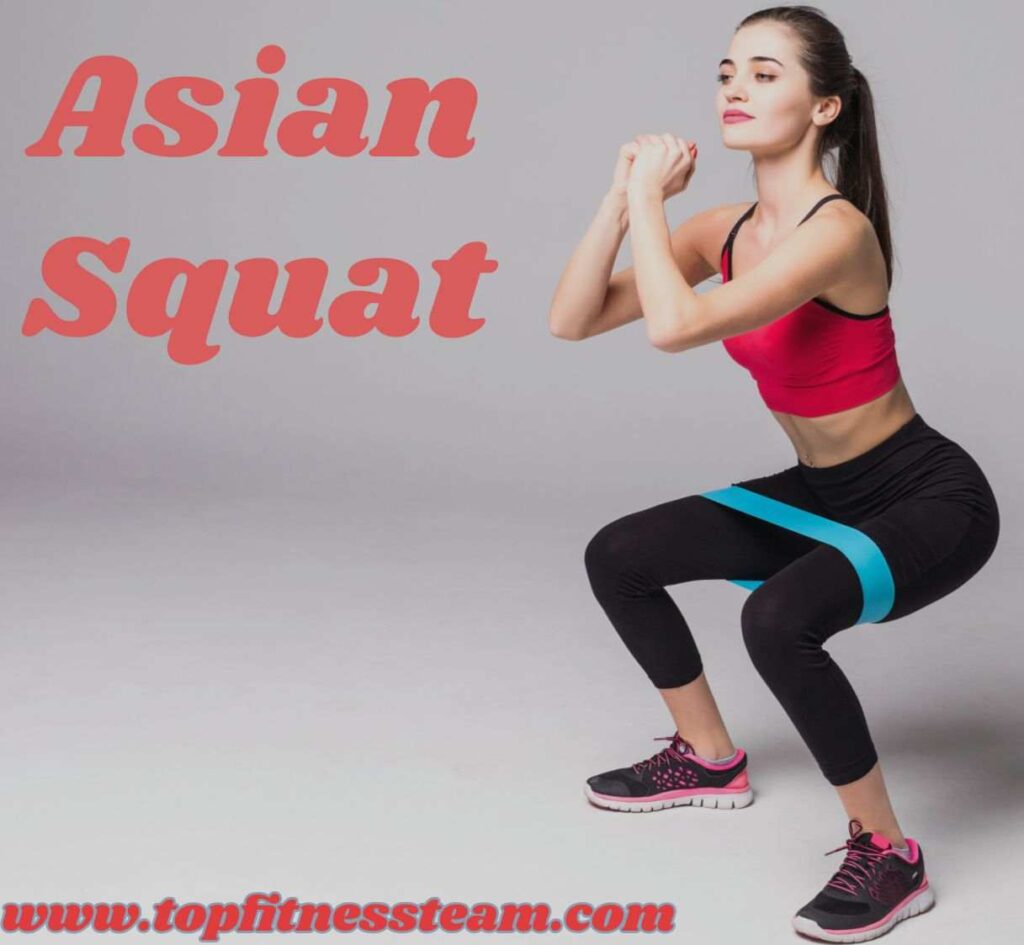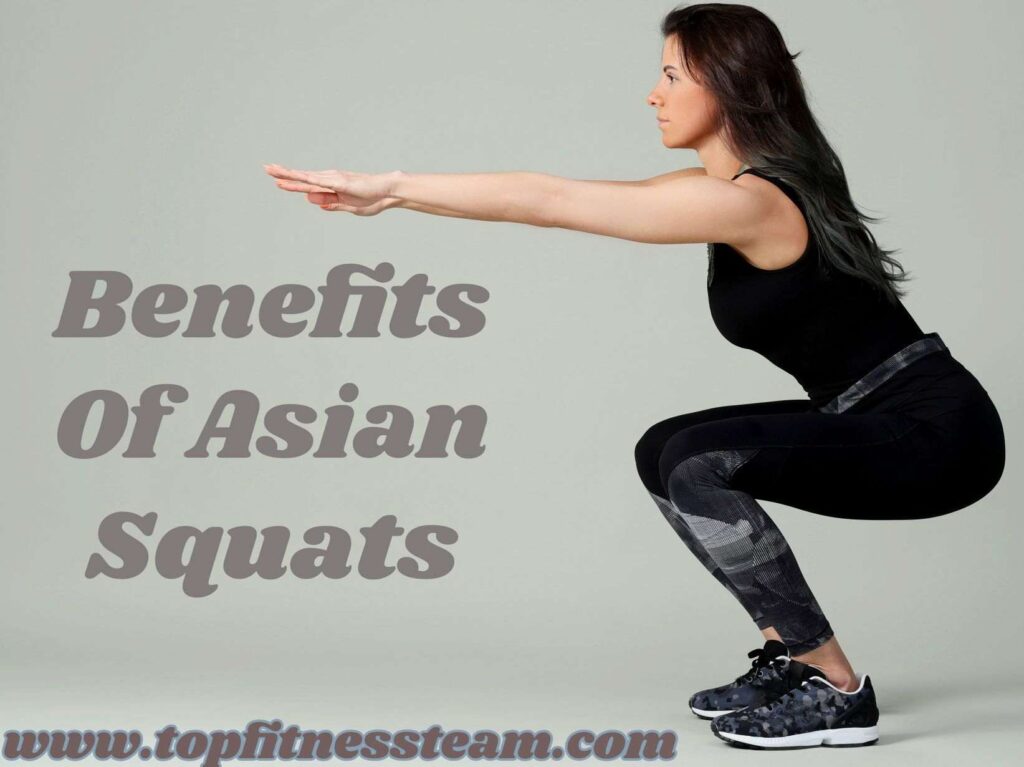Introduction
The Asian Squat is a term used to define a deep squatting position where individuals rest their upper body on their lower legs with their feet flat on the ground.
This standard pose is widely used in various Asian countries as a resting position and for other daily activities.
It reflects an essential aspect of Asian cultures while providing significant health benefits, including activating core muscles.
What are Asian Squats?
The Asian squat is a way of sitting low to the ground with feet flat and legs folded. It is common in Asia and is used for resting or doing tasks.
It differs from other squats because of how deep you sit and keeping your feet flat.
Historical Background
Is deeply embedded in Asian history. Historically, it is used in different activities, such as using squat toilets and as a regular resting position.
Its ancient ties show its continued value over centuries, highlighting its practicality and alignment with human biomechanics.
Anatomy of the Asian Squat
Exploring the Asian squat’s anatomy entails focusing on ankle flexibility and the alignment of the lower and upper body’s alignment.
A correct squat involves feet placed shoulder-width or slightly wider apart and toes pointed forward or externally.
The heels remain flat on the floor, engaging various muscles, improving balance, and providing a full range of motion.
This position improves flexibility and alleviates knee pain associated with other types of squatting, like the “slav squat.
How to Perform Asian Squats
- Start with feet shoulder-width apart.
- Keep heels flat on the ground.
- Begin by pushing your hips back.
- Lower your body, keeping the spine neutral.
- Ensure knees track over toes.
- Go down until thighs are parallel or lower.
- Keep your chest up and shoulders relaxed.
- Engage core muscles for stability.
- Maintain balance; don’t lean forward.
- Rise back up to the starting position.
- Repeat as desired.
Benefits Of Asian Squats
Improve flexibility and joint health. They support core and leg muscles, promote balance, and support a natural resting posture.
They maintain various muscle groups, including the quadriceps, hamstrings, and core, contributing to overall physical fitness.
The pose helps in improving digestion and circulation. Also, performing Asian squats can aid in reducing lower back and knee pain, supporting joint health.
Cultural Significance
In many Asian countries, the Asian squat is more than a simple posture. It means a lifestyle combined into daily routines, from street agents to families.
Individuals are expected to adopt this pose effortlessly, using it as a suitable and comfortable resting position in different contexts.
Health & Fitness Implications
The health benefits of performing an Asian squat are different.
It improves the strength and flexibility of core muscles and lower limbs, promotes better balance, and supports joint health.
Unlike the Western-style half squat, the Asian squat involves a deeper squatting position, making it more beneficial for improving overall fitness levels.
Western Adoption & Misunderstandings
The Western world’s growing interest in the Asian squat can be seen in its incorporation into fitness routines.
Yet, it is required to note that a genuine preference for this squat involves understanding its cultural and historical significance beyond fitness trends.
Despite its popularity, falsities prevail, particularly about its impact on knee health.
Contrary to these beliefs, it can help knee pain correctly, thanks to its focus on keeping the feet flat and a balanced upper body alignment.
Tips & Tricks for Perfecting the Asian Squat
For individuals keen to perfect the squat, it is essential to prioritize keeping feet flat on the ground and providing proper lower and upper body alignment.
Acceptable practice and prioritizing ankle flexibility and balanced weight issuance can reduce the risk of pain or injury.
You can further explore the methods to master the Asian Squat here.
Pros & Cons
Pros
- Improves ankle flexibility.
- Improve bowel movements.
- Strengthens leg muscles.
- Encourages healthy posture.
- Deepens hip flexibility.
Cons
- Strains untrained knees.
- Challenges balance initially.
- May pressure ankles.
- Uncomfortable for beginners.
- Requires flexibility practice.
Summary
The Asian squat is a testament to the blend of culture, suitability, and health. It highlights the importance of functional movements in daily life.
It presents a holistic approach to well-being that transcends mere physical fitness.
My Final Thoughts
In a world of complex lifestyles and health challenges, the Asian squat emerges as a beacon of simplicity and functionality.
This timeless posture, rooted in ancient traditions, offers a window into enhanced wellness, cultural preference, and holistic living.
It beckons the world to assume peace in simplicity and the power in natural movements, beckoning a return to fundamentals for improved living.
Further clear proof of another squat take can be found here.
FAQs
Q: What is the Asian squat good for?
Ans: The Asian squat improves flexibility and mobility and supports lower body muscles.
Q: Can everyone do the Asian squat?
Ans: While most can learn the Asian squat, individual anatomy and flexibility might need adjustments.
Q: What are Asian squats?
Ans: The Asian squat is a deep-seated position with feet flat on the ground, commonly practiced in Asia.
Q: What is a Hindu squat?
Ans: A Hindu squat is a bodyweight squat where heels lift off the ground, and arms swing in beat.
Q: What is a Turkish squat?
Ans: A Turkish squat is not a realized term; you meant Turkish get-up, a full-body exercise transitioning from lying to standing with a weight overhead.
Thanks.

